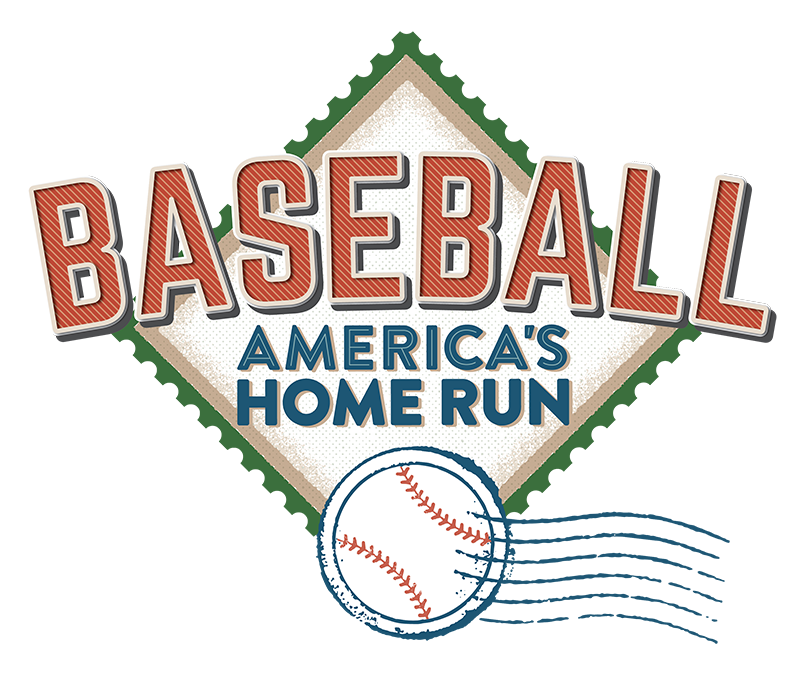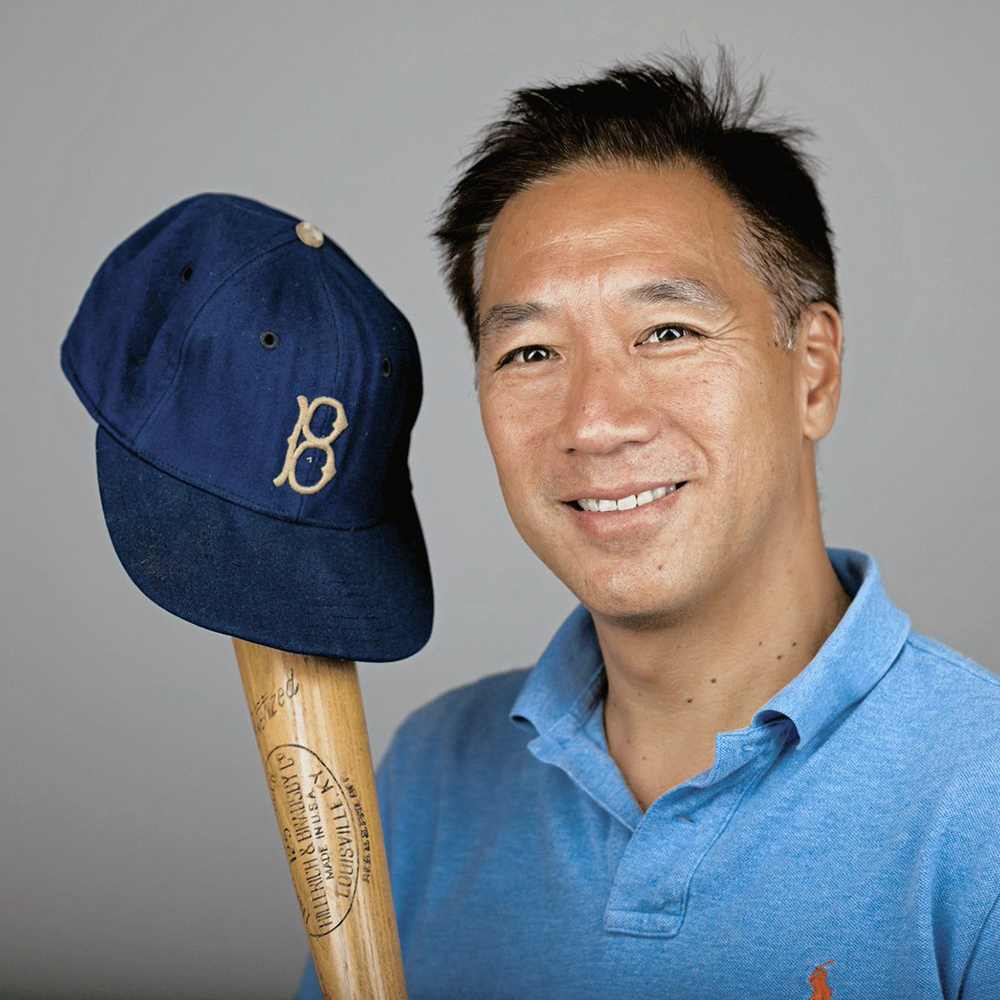Uniforme para el Hogar de Pittsburgh Pirates de Roberto Clemente, 1966
Blog invitado del autor publicado por el Smithsonian, Stephen Wong, quien también se desempeña como asesor honorario de la exhibición Béisbol: El Jonrón de los EE.UU.
“Cada vez que tienes la oportunidad de marcar una diferencia en el mundo y no lo haces, estás perdiendo el tiempo en la tierra.”
—Roberto Clemente—
Antes de la integración de las ligas mayores en 1947, las estrellas de las Ligas Negras jugaban en el Caribe fuera de temporada. El nivel de juego llegó a ser tan bueno que los jugadores blancos de las Grandes Ligas también quisieron participar. En 1947, por ejemplo, los Yankees de Nueva York viajaron a Puerto Rico y fueron derrotados por el equipo de Ponce Leones en un juego de exhibición. Los cazatalentos de las Grandes Ligas recorrieron las Ligas del Caribe en busca de talentos de bajo costo y alto impacto. Dos peloteros puertorriqueños llegaron a las Grandes Ligas a principios de la década de 1940, pero las puertas se abrieron de golpe en la década de 1950. La fiebre del béisbol en Puerto Rico alcanzó alturas sin precedentes, y la mayor estrella de la isla fue Roberto Clemente.
Roberto Clemente Walker nació el 18 de agosto de 1934, hijo de Melchor Clemente y Luisa Walker de Clemente en Carolina, un municipio al este de la capital puertorriqueña de San Juan. Roberto era el menor de los siete hijos de Luisa. Aunque Puerto Rico sufrió los estragos de la Gran Depresión (granjas y bancos quebraron, el desempleo era alto y muchos puertorriqueños no tenían alimento), Melchor conservó un trabajo como capataz en los campos de caña de azúcar. La disciplina moral y la religión eran importantes para los padres de Roberto, y estos valores siguieron siendo influyentes para Roberto a lo largo de su vida mientras navegaba por la segregación, los desafíos de una carrera en el béisbol y los esfuerzos por americanizar su personalidad e identidad.
Clemente practicaba todos los deportes, pero el béisbol era su favorito. “Me encantaba tanto el juego que, aunque nuestro campo de juego estaba embarrado y teníamos muchos árboles, solía jugar muchas horas todos los días”, escribió en su diario. “Un día conecté diez jonrones en un juego que comenzamos alrededor de las 11 am y terminamos alrededor de las 6:30 pm”. Ayudó a su padre a cargar y descargar camiones de azúcar y lanzó la jabalina en el Liceo Vizcarrondo. Firmó para jugar en la liga puertorriqueña cuando aún estaba en la escuela secundaria y bateó .356 el año en que se graduó. Al Campanis, un cazatalentos de los Dodgers de Brooklyn, escuchó historias sobre las habilidades de Clemente antes de verlo, y el 19 de febrero de 1954, los Dodgers firmaron al jardinero de 19 años con un bono de $10,000 y un salario de $5,000. Los Dodgers ya tenían una lista completa, por lo que enviaron a Clemente a los Reales de Montreal, un equipo de ligas menores, para la temporada de 1954. De acuerdo con las reglas vigentes, jugar para los Reales hizo que Clemente fuera elegible para el draft de novatos de las Grandes Ligas. Los Dodgers trataron de mantener a Clemente fuera del centro de atención, pero el entrenador de Pittsburgh, Clyde Sukeforth, quien tenía un sexto sentido para el talento, arrebató a Clemente cuando se realizó el draft en noviembre de 1954.

Préstamo de The Stephen Wong Collection
Clemente debutó con los Piratas de Pittsburgh el 17 de abril de 1955. Branch Rickey, el manager de los Piratas, no quedó impresionado con su nuevo jugador, aunque confiaba en el juicio de Sukeforth. Criticó la carrera de Clemente ("mala, definitivamente mala") y su falta de poder como bateador. Elogió el “hermoso brazo para lanzar" de Clemente, pero concluyó que necesitaba trabajo: “Puede correr, lanzar y batear”, dijo Rickey. “Sin embargo, necesita mucho pulido, porque es un diamante en bruto”. Clemente buscó entrenadores para mejorar su juego y, después de batear .255 como novato, aumentó su promedio a .311 en su segunda temporada. Sus números subieron y bajaron durante los dos años siguientes, pero para 1960 se había vuelto confiablemente consistente en todo lo que hacía en el campo.
Fuera del campo, Clemente enfrentó otro tipo de desafíos. Al hacer ese debut en 1955, Clemente cruzó una doble línea de color: negro y latino. Aunque Jackie Robinson había integrado el béisbol ocho años antes, los jugadores negros aún no eran comunes en la MLB. Clemente también fue el primer latino en jugar en el Forbes Field, y aunque insistió, “no veo el color”, le molestaba que otros sí lo hicieran. Y Clemente no se recusó de cuestiones de justicia racial. A diferencia de Jackie Robinson, Clemente llevaba su ira bajo la manga. “Tienen una preferencia abierta por los norteamericanos”, dijo sobre la prensa deportiva. “Los jugadores mediocres reciben una publicidad inmensa mientras que las verdaderas estrellas no son destacadas como se merecen”.
Clemente fue una estrella cuya trascendencia fue mucho más allá de los números. Se comportaba con gracia, incluso con nobleza, e impresionaba a los demás tanto con su personalidad como con su destreza atlética. Bowie Kuhn, entonces comisionado de béisbol, dijo: “Le dio al término ‘completo’ un nuevo significado. Hizo que la palabra “superestrella” pareciera inadecuada. Tenía en él el toque de la realeza”. Clemente jugaba “un tipo de béisbol que ninguno de nosotros había visto antes”, escribió el periodista deportivo Roger Angell, “lanzando, corriendo y bateando a algo cercano al nivel de perfección absoluta, jugando para ganar pero también jugando el juego casi como si fuera eran una forma de castigo para todos los demás en el campo”. En la Serie Mundial de 1971, era un equipo de un solo hombre: bateaba, atrapaba elevados, disparaba un calor monstruoso desde los jardines para que sus jugadores del cuadro pudieran eliminar a los corredores, y ganó el MVP de la Serie Mundial. Como le dijo a Angell, “Quiero que todos en el mundo sepan que esta es la forma en que juego todo el tiempo. Toda la temporada, cada temporada. Le di todo lo que tenía a este juego”.
La jugada de la Serie Mundial de Clemente mostró cuán cierto era eso. Los Piratas se transformaron de una franquicia en apuros a una organización campeona después de que Clemente se uniera al equipo. En 1960, bateó .314 con 16 jonrones, lo que llevó a los Piratas a enfrentarse a los Yankees de Nueva York de la era Mickey Mantle/Roger Maris en la Serie Mundial. El segunda base de los Pirates, Bill Mazeroski, fue la estrella de la Serie porque conectó el jonrón ganador del juego en la parte baja de la novena entrada en el Juego 7. Pero Clemente también estuvo impresionante. Bateó .310 con nueve hits en la Serie, y en la octava entrada del Juego 7, su bate y su ajetreo mantuvieron vivo el impulso de los Piratas. El relevista de los Yankees, Jim Coates, conectó dos strikes rápidos sobre Clemente, y estaba a un strike de sacar a los Yankees de su problema más serio de la tarde cuando Clemente finalmente conectó un blooper hacia primera. El primera base Bill Skowron y Coates corrieron por la pelota, y Skowron la alcanzó al borde del césped del cuadro interior. La velocidad de Clemente obligó a Skowron a sostener la pelota cuando Coates no pudo llegar a la primera base a tiempo para cubrir. El helicóptero alto permitió a Bill Virdon anotar desde la tercera, reduciendo la ventaja de los Yankees a 7 a 6. Hal Smith siguió con un jonrón de tres carreras para darle a los Piratas una ventaja de 9 a 7.
Clemente jugó para los Piratas durante otra docena de temporadas. En 1966, logró los máximos de su carrera en jonrones (29) y carreras impulsadas (119) mientras vestía la camiseta y los pantalones de franela de los Piratas de Pittsburgh, la camiseta interior y el casco de bateo que se muestran aquí. Ese año Clemente ganó su primer y único premio MVP de la Liga Nacional.
En su último turno al bate en 1972, Clemente consiguió su hit número 3000, convirtiéndose en el undécimo jugador en alcanzar ese hito. Clemente y Mazeroski eran los únicos Piratas que quedaban del equipo de 1960 y Clemente se estaba preparando para el retiro. Al final de la temporada, dejó el béisbol y se dedicó a su obra de caridad. El 31 de diciembre, abordó un avión para volar a Managua, Nicaragua, para asegurarse de que los suministros de socorro para las víctimas de un devastador terremoto no terminaran en manos de los traficantes del negro. El avión de carga sobrecargado se estrelló en el mar frente a Puerto Rico inmediatamente después del despegue. El cuerpo de Clemente nunca fue encontrado.
Roberto Clemente le dio todo al béisbol. En Pittsburgh, todavía se le conoce como “el Grande”. Sus honores hablan por sí solos, entre ellos cuatro títulos de bateo de la Liga Nacional y 12 premios Guante de Oro. En 1973, Clemente se convirtió en el primer jugador de América Latina en ingresar al Salón de la Fama en Cooperstown. Normalmente, un jugador no puede ser admitido hasta al menos cinco años después de su retiro, pero se hizo una excepción con Clemente debido a las circunstancias que rodearon su muerte.
Clemente fue un constante defensor de la igualdad y el trato justo para los jugadores afroamericanos y latinos, una profunda contribución al juego que no se registra en los libros de récords. Su feroz orgullo étnico y su capacidad de portar una identidad mucho más grande, no solo para Puerto Rico sino para toda América Latina, fue una responsabilidad que abrazó y llevó con dignidad y gracia. No se veía a sí mismo como un mero representante de América Latina. Vio su carrera en el béisbol como un medio para ayudar a los latinoamericanos, especialmente a los puertorriqueños desfavorecidos, a mejorar sus vidas. Dijo su viejo amigo Luis Mayoral, un destacado locutor de habla hispana: “Roberto Clemente era para los latinos lo que Jackie Robinson era para los peloteros negros. Habló por los latinos; él fue el primero en hablar”.
—Basado en The Great One por Stephen Wong en Game Worn: Baseball Treasures from the Game’s Greatest Heroes and Moments, Stephen Wong y Dave Grob, Smithsonian Books, 2016—
Sobre el Autor
Stephen Wong es director gerente, codirector del Grupo de Bienes Raíces en Asia excepto Japón y presidente de la División de Banca de Inversión para Hong Kong en Goldman Sachs. Se incorporó a Goldman Sachs en 2005 y recibió el prestigioso premio John L. Weinberg de la firma en 2020. Ha publicado tres libros con Smithsonian Books, el más reciente Game Worn: Baseball Treasures from the Game's Greatest Heroes and Moments (2016), que fue nominado al premio Premio Casey. El propio Wong es un coleccionista de toda la vida de artefactos de béisbol raros y significativos. Es una de las autoridades más importantes del mundo en uniformes de béisbol, bates usados en juegos y otras formas de recuerdos y ha ayudado a organizar exhibiciones con temas de béisbol en el Museo Nacional de Historia Judía Estadounidense, el Museo Maltz de la Herencia Judía y el Centro Cultural Skirball para “ Chasing Dreams: Baseball and Becoming American” (2014 – 2016) y el Museo de la Ciudad de Nueva York por “Glory Days: New York Baseball, 1947 – 1957” (2007). Wong también se desempeña como asesor principal del Museo Jackie Robinson en Nueva York y también asesora y presta artefactos a los Gigantes de San Francisco. Wong es miembro de la Junta de Fideicomisarios de las universidades Hobart y William Smith, donde obtuvo una licenciatura en economía en 1989 y recibió un doctorado en derecho de la Facultad de derecho de Stanford en 1992.


